Presentation
Mar 12 2024
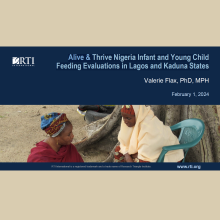
Alive & Thrive Nigeria Infant and Young Child Feeding Evaluations in Lagos and Kaduna States
This slide deck was part of a presentation given by RTI International and Alive & Thrive during a post-graduate course lecture at Johns Hopkins University on January 25, 2024.
Toolkit
Feb 01 2024
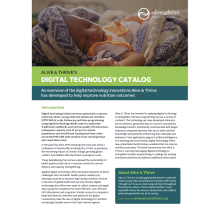
Alive & Thrive Digital Technology Catalog: An overview of the digital technology innovations Alive & Thrive has developed to help improve nutrition outcomes
This brief summarizes how Alive & Thrive is currently leveraging digital technology to strengthen nutrition programming. It catalogs our existing innovations and directs readers to additional information.
Journal article
Jan 26 2024
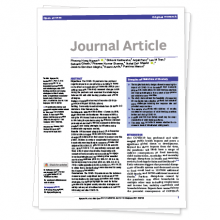
Overpromoted and underregulated: National binding legal measures related to commercially produced complementary foods in seven Southeast Asian countries are not fully aligned with available guidance (Blankenship J, et al. Maternal & Child Nutrition. 2023)
The market for commercially produced complementary foods (CPCF) is rapidly expanding in Southeast Asia. This study, co-authored by Alive & Thrive, suggests improved, comprehensive, and enforceable national binding legal measures for CPCF to ensure that countries protect, promote, and support optimal nutrition for older infants and young children.
Case study
Jan 23 2024
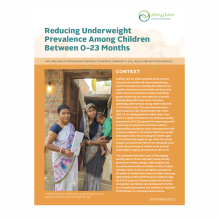
Reducing Underweight Prevalence Among Children Between 0-23 Months
This case study describes a pilot conducted in the Amethi Health Sub-Centre of the Wazirganj block in Bihar state’s Gaya district. It applies the point of care continuous quality improvement approach for improving growth monitoring and promotion activities to address undernutrition prevalence at the community level with a focus on children 0–23 months.
Case study
Jan 22 2024
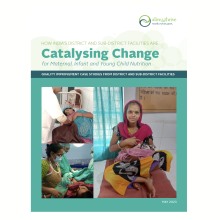
How India's District and Sub-District Facilities Are Catalysing Change for Maternal, Infant and Young Child Nutrition: Quality Improvement Case Studies from District and Sub-District Facilities
Alive & Thrive collaborated with government medical colleges and affiliated hospitals in Uttar Pradesh and Bihar to undertake a point of care quality-focused approach for strengthening maternal, infant, and young child nutrition service delivery and cascaded the interventions to district and sub-district hospitals with support from medical colleges.
Journal article
Jan 08 2024

Bridging the evidence-to-action gap: enhancing alignment of national nutrition strategies in Cambodia, Laos, and Vietnam with global and regional recommendations (Nguyen TT, Huynh NL, et al. Frontiers in Nutrition. 2024)
This journal article details Alive & Thrive’s examination of the alignment of recent National Nutrition Strategies and Action Plans (NNS) in Cambodia, Laos, and Vietnam with recent global and regional recommendations and standards with a focus on maternal, infant, and young child nutrition an

